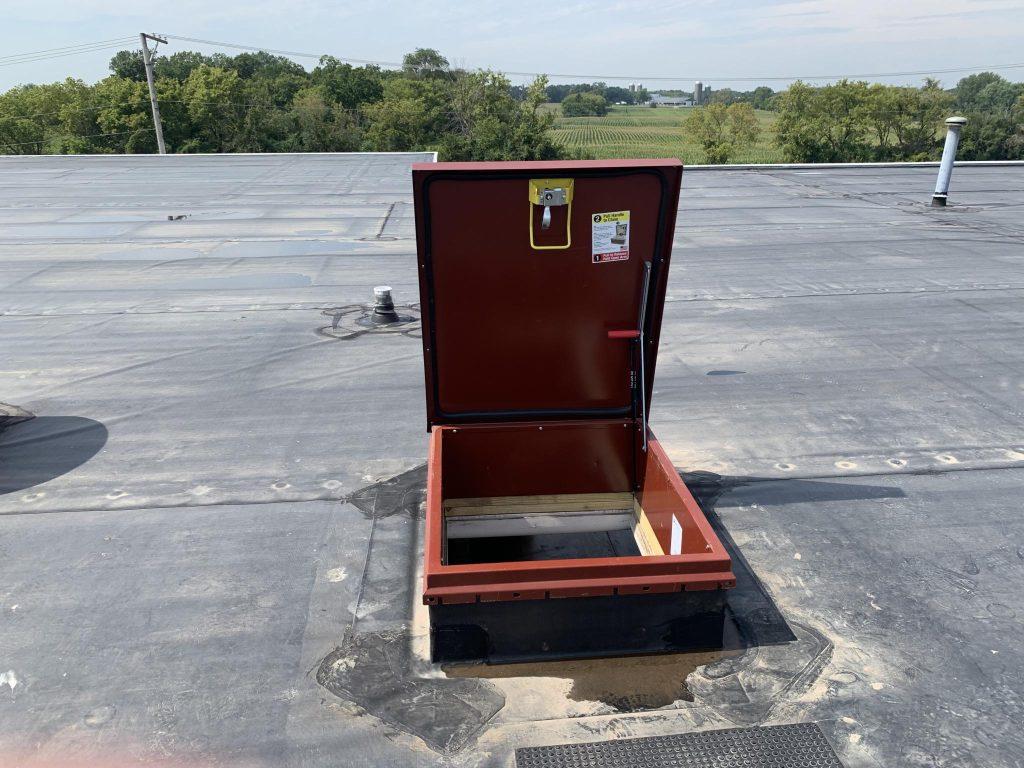Roof hatches are an essential part of many buildings, providing access to rooftops for maintenance, inspections, and emergency exits. However, like any other component of a structure, roof hatches can deteriorate over time due to wear and exposure to the elements. In this guide, we will explore the importance of roof hatch repair, the common issues that may arise, and the steps to ensure the safety and functionality of these crucial access points.

Understanding Roof Hatch Systems
The Role of Roof Hatches
Roof hatches serve various functions, such as providing access to rooftop equipment, acting as an emergency exit route, and facilitating maintenance and inspections. They are typically installed on commercial and industrial buildings, but you can also find them on residential structures, especially in areas where roof access is necessary.
Components of a Roof Hatch
A standard roof hatch consists of several components, including:
- Hatch Cover: The hinged lid that provides access to the roof.
- Curb: The raised frame that the hatch cover sits on.
- Hinges and Latches: Mechanisms that allow the hatch cover to open and secure it when closed.
- Gaskets and Seals: Weatherstripping to prevent water infiltration.
- Safety Rails and Gratings: Additional safety features to protect users.
Common Issues with Roof Hatches
Roof hatches are exposed to various weather conditions and may encounter wear and tear. Here are some common issues that may require roof hatch repair:
- Leaking: Gaskets and seals may degrade over time, leading to water leaks.
- Rusting: Metal components can rust, compromising the hatch’s structural integrity.
- Damaged Hinges or Latches: Faulty or broken hinges and latches can make the hatch difficult to open or close.
- Worn Safety Features: Safety rails and gratings may deteriorate, posing safety risks.
- Inadequate Insulation: Poor insulation can result in energy loss and temperature control issues.
The Importance of Roof Hatch Repair
Safety First
Ensuring that your roof hatch is in good working condition is paramount for safety. A malfunctioning or damaged hatch can lead to accidents, injuries, or even fatalities. Regular roof hatch maintenance and prompt repair of any issues are essential to mitigate these risks.
Protection Against the Elements
Roof hatches are exposed to various weather conditions, including rain, snow, and UV radiation. Proper repair and maintenance help prevent water infiltration and protect the interior of the building from damage caused by leaks.
Steps for Roof Hatch Repair
Inspection
Regular inspections are essential to identify any issues with your roof hatch. Inspect the gaskets, seals, hinges, latches, safety features, and the overall condition of the hatch cover and curb. Look for signs of rust, corrosion, or wear.
Maintenance and Cleaning
Clean the roof hatch and its components regularly to remove dirt and debris. Lubricate hinges and latches to ensure smooth operation. Replace weatherstripping if it shows signs of wear or damage.
Professional Repair
If you identify any significant issues during your inspection, it’s advisable to seek professional roof hatch repair services. Professionals can assess the extent of the damage and perform the necessary repairs to ensure the hatch’s safety and functionality.
Conclusion: Protecting Your Roof Access
Roof hatches are vital access points for many buildings, and their proper maintenance and repair are essential for safety and functionality. Regular inspections, cleaning, and timely repair can extend the lifespan of your roof hatch and prevent costly damage to your property. Don’t overlook the importance of roof hatch repair; it’s an investment in the safety and integrity of your building.



Leave a Reply